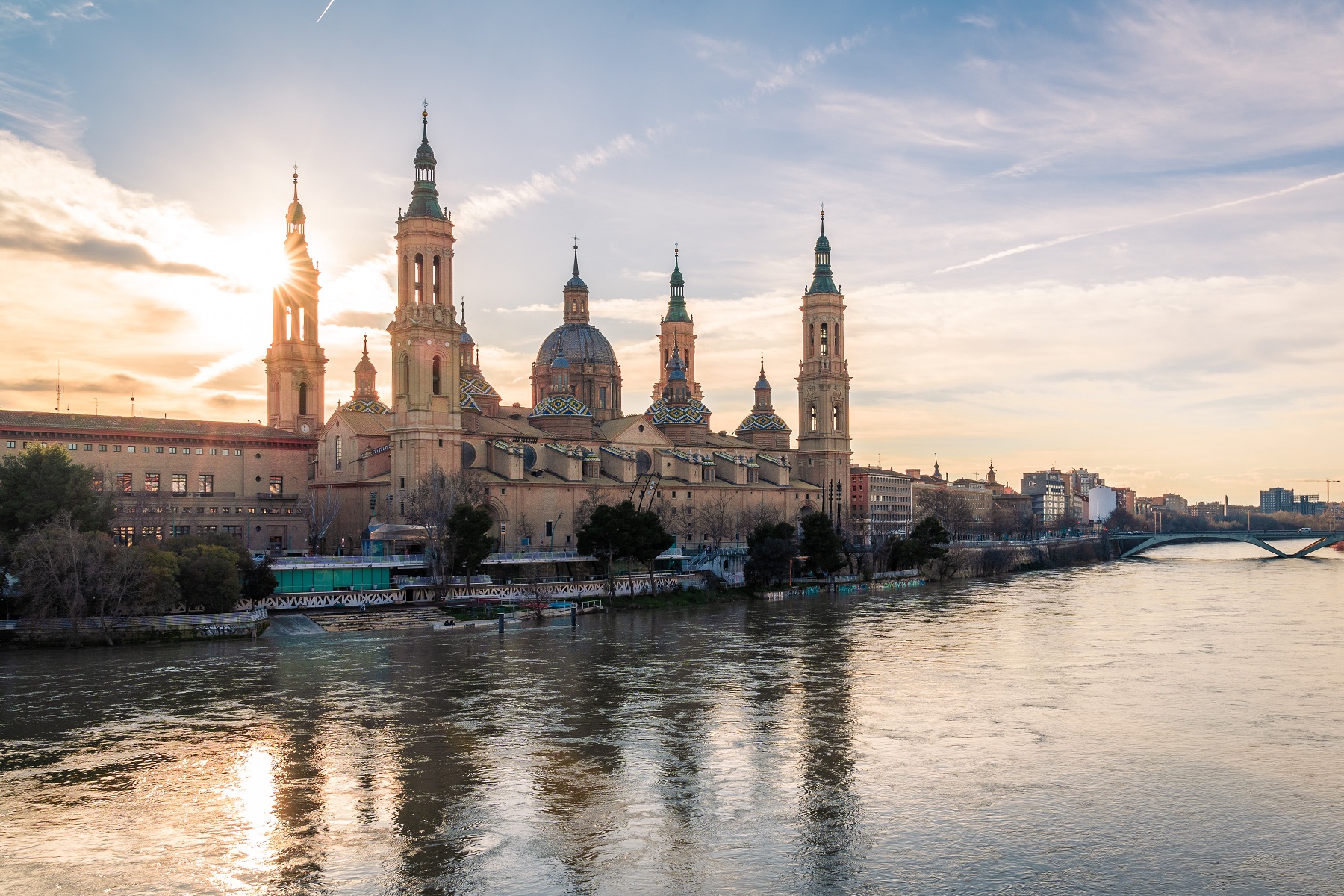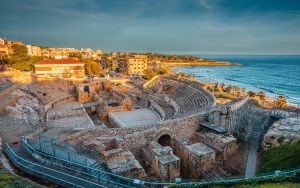Quick search
CTRL+K
Quick search
CTRL+K

Tarragona is a city on the Mediterranean, located in the region of Catalonia. The city is old and has been known for thousands of years. The Romans conquered the region in 218 BC, and they made Tarragona the capital of the province of Hispania Citerior with the name Tarraco. This status resulted in great construction activity with construction of an aqueduct, an amphitheater, a triumphal arch, and other structures. The Western Roman Empire fell in 476 and Tarragona was conquered by the Visigoths. In the 7th century, the Moors conquered the city, which was destroyed on that occasion and generally experienced decline until the Christian reconquest in the 12th century. Spanish rule repopulated the city and the Roman city walls were reinforced. Tarragona also became the ecclesiastical center of Catalonia and grew over the following centuries.
Today, you can enjoy both Tarragona’s cozy old town, the newer neighborhoods and the city’s Mediterranean coast. In the old town, you can start a walk at Plaça de la Seu, where the city’s cathedral is located. It was built from 1154 on the same site as a former Roman temple, a Visigothic church and a Moorish mosque. The cathedral was consecrated in 1331, and the architecture is a mixture of Romanesque and Gothic styles. Behind the cathedral is a remarkable monastery from the 13th century. You can continue to Plaça de la Font, where Tarragona’s Town Hall stands. It is housed in a beautiful building that was formerly a Dominican monastery. In the newer part of the city, you can walk from Plaça Imperial Tàrraco along the wide Rambla Nova to Tarragona’s fine promenade, which is elevated above the Mediterranean Sea and the city’s beaches.
In Tarragona, you can see preserved parts from the city’s Roman past in several places, and the Roman ruins are on UNESCO’s list of world cultural heritage. One of the best-known works from this time is the city’s amphitheater, which was built around 100 BC. The amphitheater had a capacity of 15,000 spectators and was in operation throughout much of the Roman era, after which it was abandoned and used for construction of other buildings. However, large parts are still preserved. The other great Roman monument is the Aqüeducte de les Ferreres, which is an aqueduct just north of Tarragona. The aqueduct was built around the year 0 and was part of the water supply for Roman Tarraco. In the city center you can also see the ancient Roman forum, preserved columns and walls.
You can take a nice walk around Tarragona’s old town and see the impressive Roman city wall that was erected in the 100s. The wall was originally 3,500 meters in length, and today around 1,100 meters remain. The best-preserved parts can be seen along the Passeig Arqueològic path, where the wall stands tall with towers and gateways. On a walk in the city, you can see other ruins as well such as the walls around Torre de les Monges, which were built in the 14th century. In the streets Carrer dels Ferrers and Carrer de l’Enrajolat you can have a look at preserved walls from the 12th century. In the same area was the Roman circus and the tower Torre del Pretori, which are connected by long passages below the facilities. You can also notice the royal castle, Castell del Rei, which was built into an old Roman tower after the Christian reconquest of the area.

Barcelona is the Catalan capital with millions of inhabitants and a magnificent location on the warm Mediterranean coast. Today, Barcelona is in Spain, but the Catalan history, language and culture clearly make the city and region different to the rest of Spain, and this is interesting to see as a visitor.
Over time, amazing buildings have been built in the various neighborhoods, of which Barri Gotic is the old medieval center with cozy streets, distinguished squares and churches and palaces from ancient times, where rulers of the city were in power. The old town feeling is enjoyed among other places on the beautiful Plaça del Rei and at the cathedral.

Zaragoza is a large city located on the Ebro River in Aragon, known for its great history as an independent kingdom. However, the city has also been the scene of major events in recent years, such as in 2008, when Zaragoza hosted the world exhibition Expo 2008.
There are many sights in Zaragoza, and you should not least visit the Cathedral of La Seo, the Basílica del Pilar and the Aljafería Palace, all three of which are included in UNESCO’s World Heritage List as part of Aragon’s Mudéjar architecture.
 Tarragona, Spain[/caption]
Tarragona, Spain[/caption]
Overview of Tarragona
Tarragona is a city on the Mediterranean, located in the region of Catalonia. The city is old and has been known for thousands of years. The Romans conquered the region in 218 BC, and they made Tarragona the capital of the province of Hispania Citerior with the name Tarraco. This status resulted in great construction activity with construction of an aqueduct, an amphitheater, a triumphal arch, and other structures. The Western Roman Empire fell in 476 and Tarragona was conquered by the Visigoths. In the 7th century, the Moors conquered the city, which was destroyed on that occasion and generally experienced decline until the Christian reconquest in the 12th century. Spanish rule repopulated the city and the Roman city walls were reinforced. Tarragona also became the ecclesiastical center of Catalonia and grew over the following centuries.
Today, you can enjoy both Tarragona’s cozy old town, the newer neighborhoods and the city’s Mediterranean coast. In the old town, you can start a walk at Plaça de la Seu, where the city’s cathedral is located. It was built from 1154 on the same site as a former Roman temple, a Visigothic church and a Moorish mosque. The cathedral was consecrated in 1331, and the architecture is a mixture of Romanesque and Gothic styles. Behind the cathedral is a remarkable monastery from the 13th century. You can continue to Plaça de la Font, where Tarragona’s Town Hall stands. It is housed in a beautiful building that was formerly a Dominican monastery. In the newer part of the city, you can walk from Plaça Imperial Tàrraco along the wide Rambla Nova to Tarragona’s fine promenade, which is elevated above the Mediterranean Sea and the city’s beaches.
About the Tarragona travel guide
Contents: Tours in the city + tours in the surrounding area
Published: Released soon
Author: Stig Albeck
Publisher: Vamados.com
Language: English
About the travel guide
The Tarragona travel guide gives you an overview of the sights and activities of the Spanish city. Read about top sights and other sights, and get a tour guide with tour suggestions and detailed descriptions of all the city’s most important churches, monuments, mansions, museums, etc.
Tarragona is waiting for you, and at vamados.com you can also find cheap flights and great deals on hotels for your trip. You just select your travel dates and then you get flight and accommodation suggestions in and around the city.
Read more about Tarragona and the Spain
Spain Travel Guide: https://vamados.com/spain
City tourism: https://visittarra-gona.es
Main Page: https://www.vamados.com/
Buy the travel guide
Click the “Add to Cart” button to purchase the travel guide. After that you will come to the payment, where you enter the purchase and payment information. Upon payment of the travel guide, you will immediately receive a receipt with a link to download your purchase. You can download the travel guide immediately or use the download link in the email later.
Use the travel guide
When you buy the travel guide to Tarragona you get the book online so you can have it on your phone, tablet or computer – and of course you can choose to print it. Use the maps and tour suggestions and you will have a good and content-rich journey.

Similar to Tarragona Travel Guide
